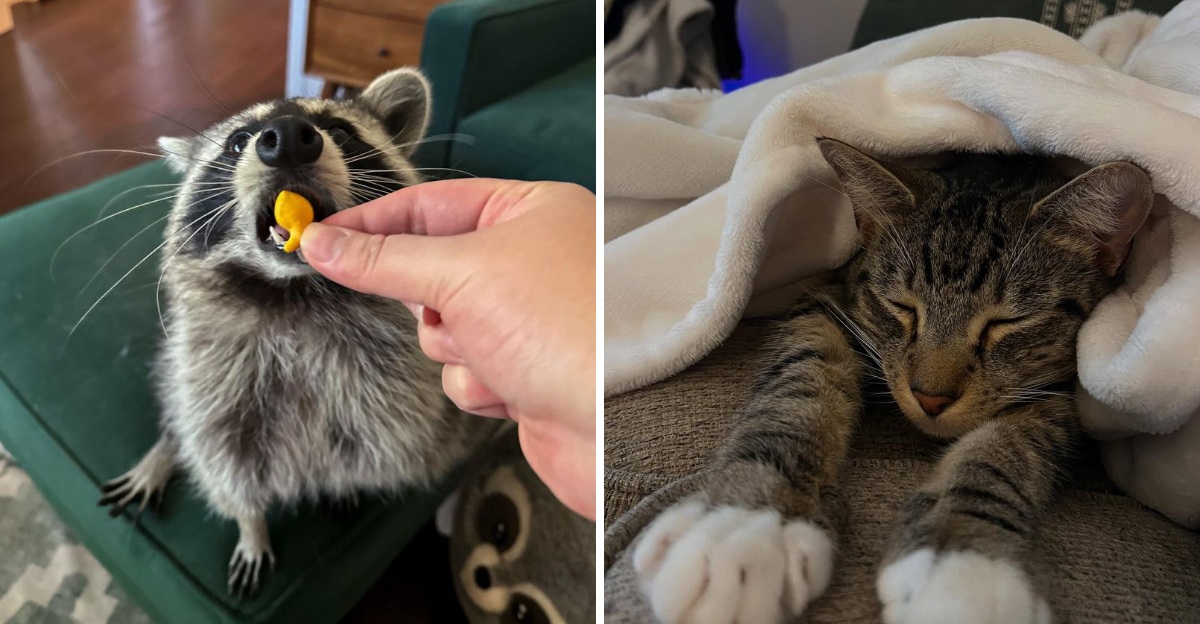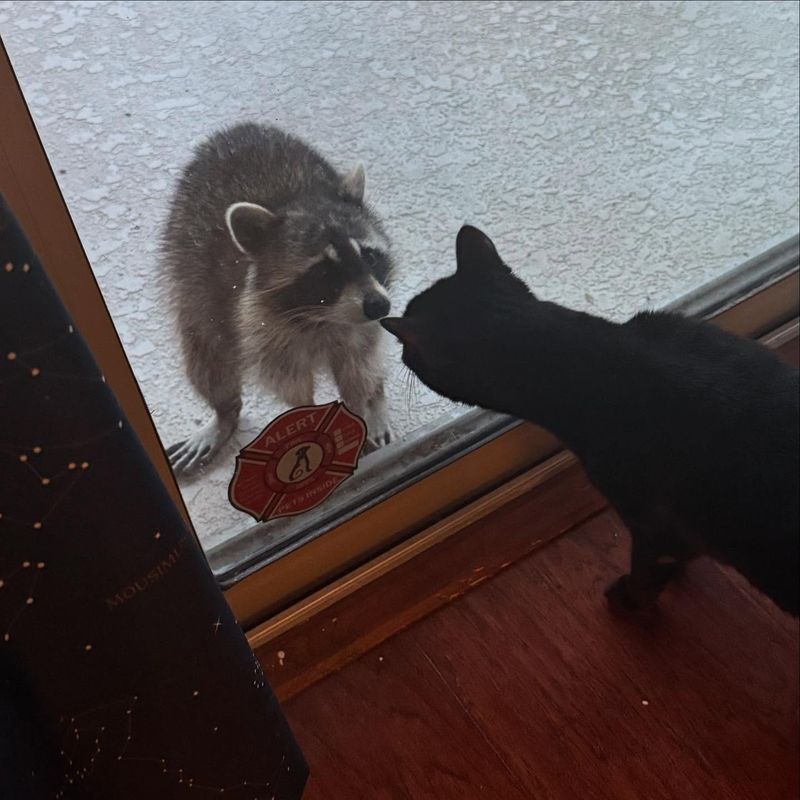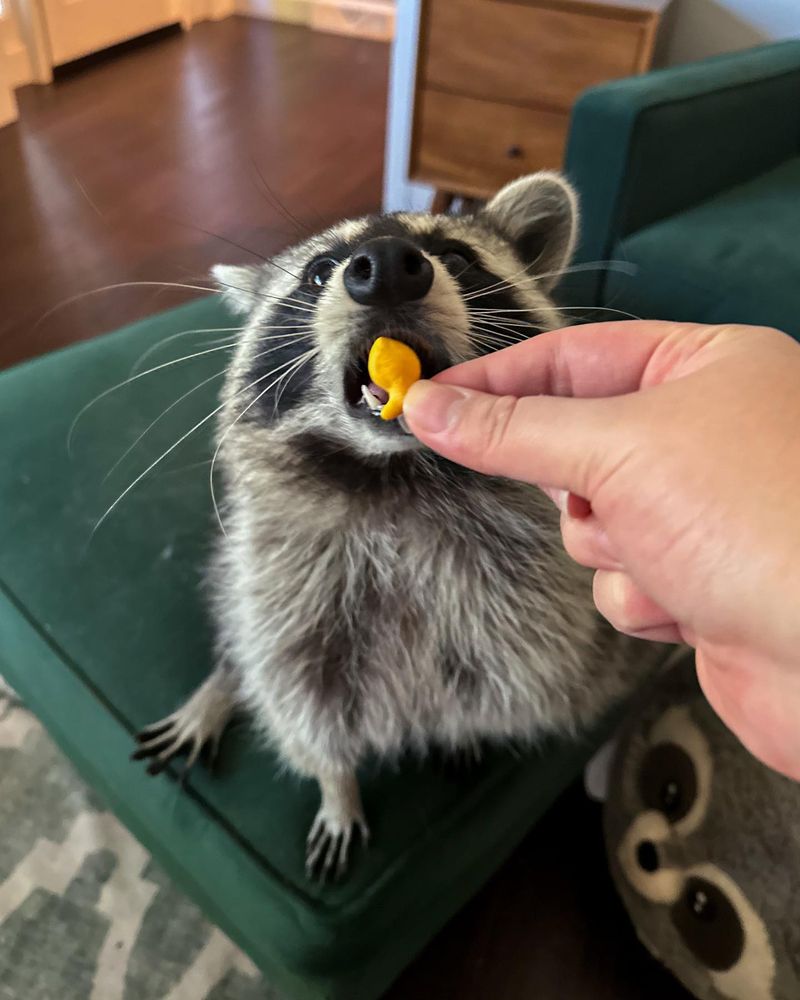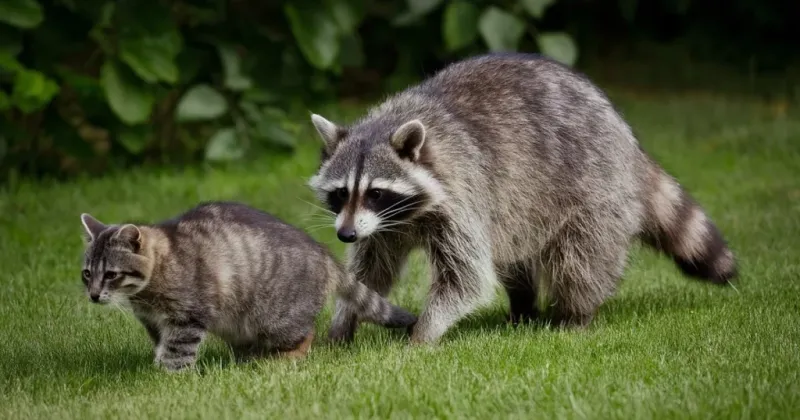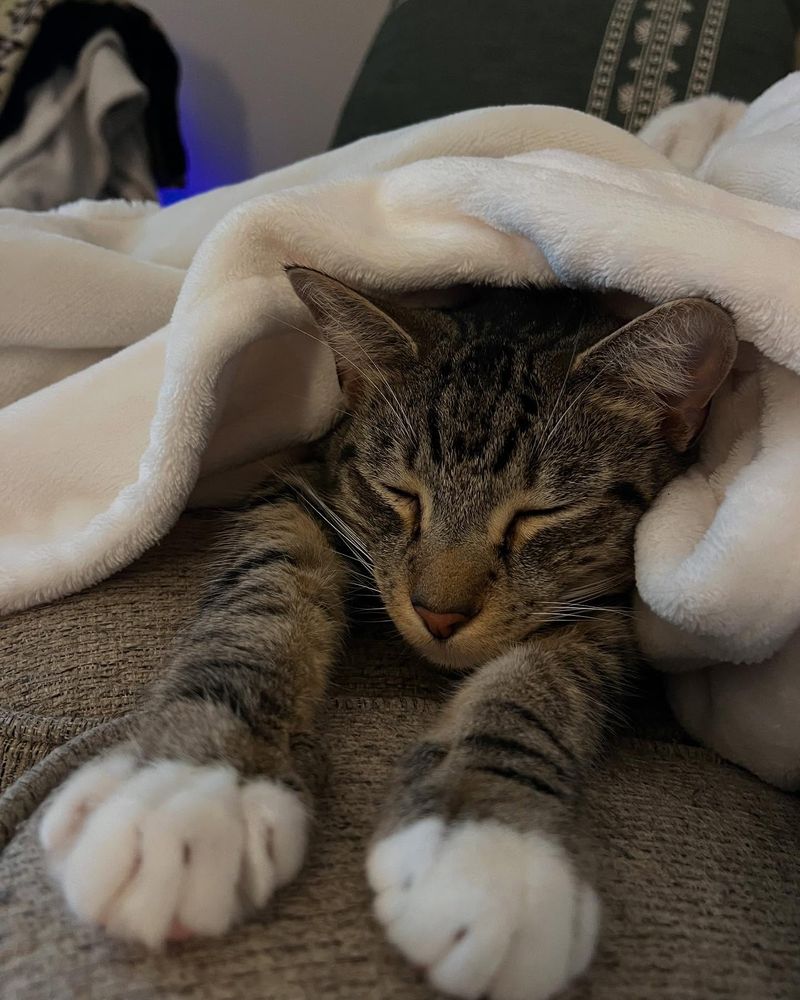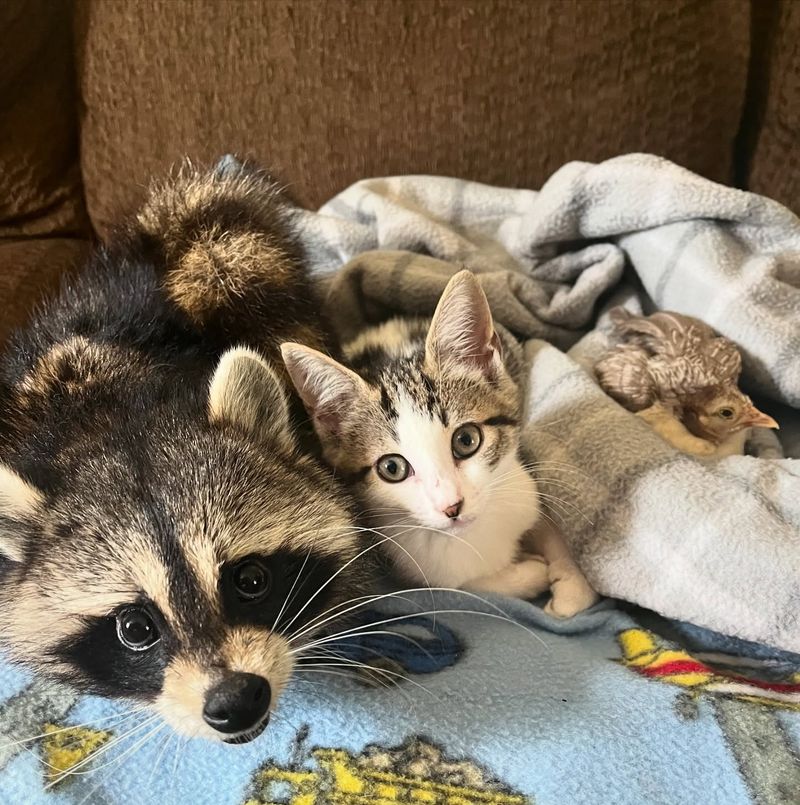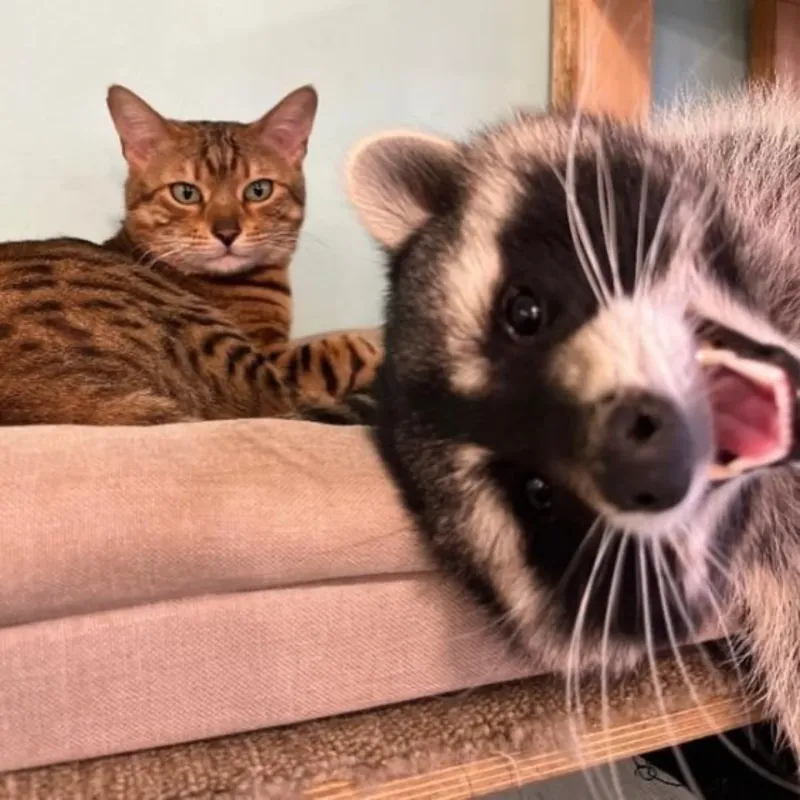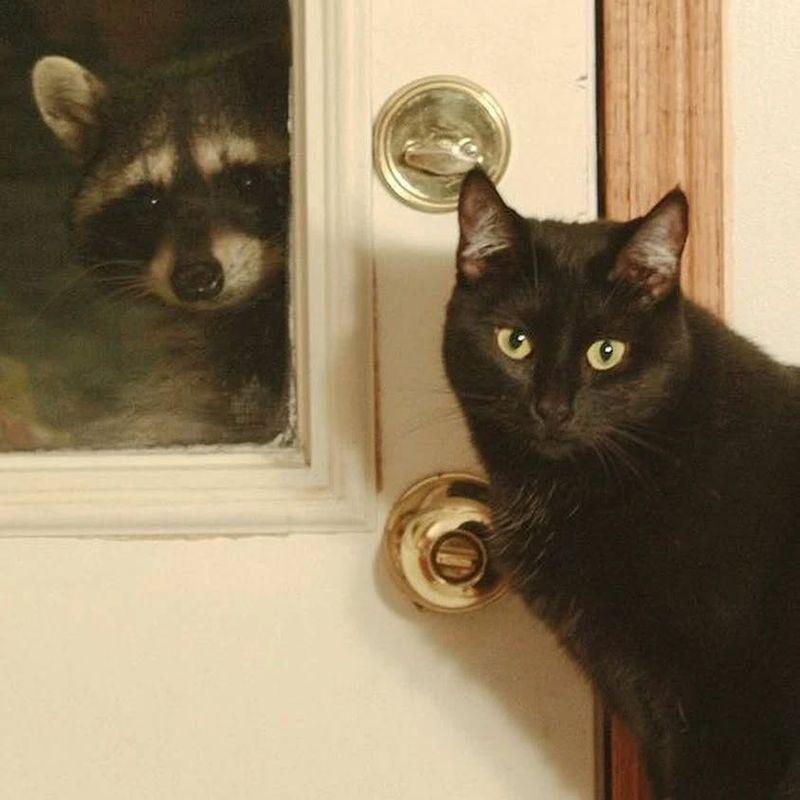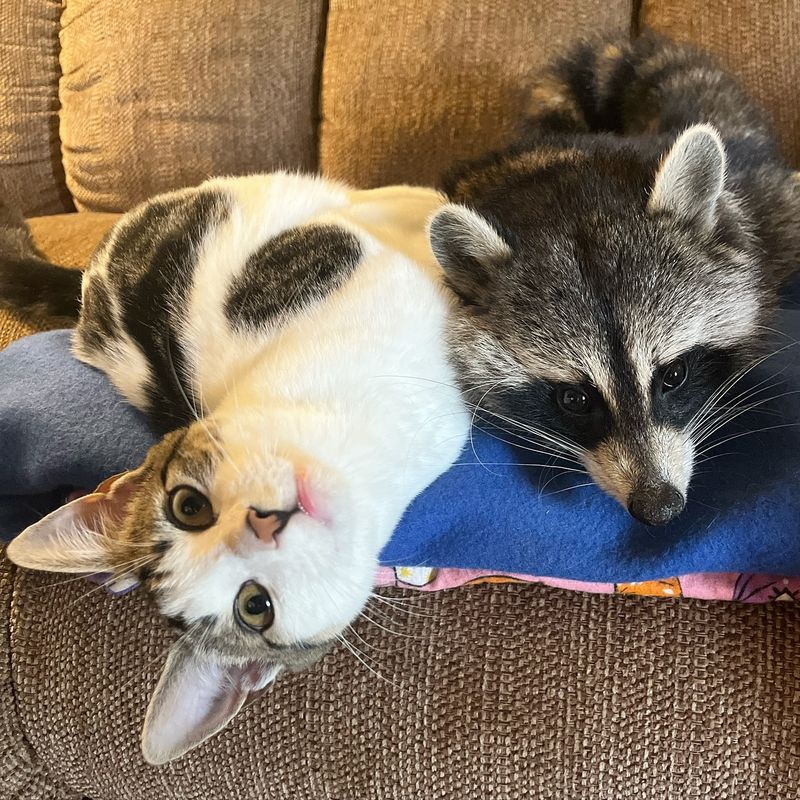📖 Table of Content:
Think your cat could peacefully coexist with a raccoon? Think again.
While they might both love a good midnight snack and share the same backyard, cats and raccoons are far from compatible roommates. One’s a stealthy, territorial hunter; the other’s a bold, trash-diving trickster with zero respect for boundaries. When these two cross paths, it’s less “Disney animal friendship” and more “wildlife showdown.”
From turf wars and food fights to hygiene habits and disease risks, we’re diving into the many reasons why these furballs just can’t get along. If you’ve ever seen your cat freeze like a statue when a raccoon appears, there’s a reason—and it’s more than just instinct.
Here are the wild truths behind why cats and raccoons should never, ever share a living space.
1. Territory Tensions Run High
Cats are famously territorial creatures who mark their domains with scent and defend them fiercely. When raccoons waddle into a cat’s claimed space, they’re essentially crossing an invisible boundary line that kitty has carefully established.
Unlike respectful wildlife that might retreat, raccoons have zero regard for feline property rights. These masked bandits follow food sources rather than territorial rules, creating instant conflict when they invade a cat’s turf.
The resulting standoffs often involve arched backs, puffed tails, and threatening vocalizations as each animal tries to assert dominance in the disputed area.
2. Midnight Munchies Competition
Both animals are natural nocturnal hunters with overlapping food preferences. Your cat’s outdoor food bowl becomes prime real estate when the sun goes down, attracting hungry raccoons looking for an easy meal.
Food aggression emerges quickly when resources are limited. Raccoons won’t hesitate to challenge cats for access to kibble, creating dangerous confrontations over dinner.
Even in natural settings, they compete for the same prey – mice, birds, and small reptiles. This dietary overlap means they’re constantly battling for the same limited food sources, especially in urban and suburban environments where hunting grounds are already restricted.
3. Size and Strength Mismatch
Your average housecat weighs around 10 pounds, while adult raccoons typically tip the scales at 15-20 pounds of pure muscle and attitude. This significant size difference creates an immediate power imbalance in any confrontation.
Raccoons possess remarkably dexterous front paws with five long fingers capable of grabbing, holding, and manipulating objects, and unfortunately, grabbing cats. Their strength allows them to overpower most domestic cats in direct physical confrontations.
Even the most confident outdoor cat usually recognizes this disadvantage instinctively, which is why many felines choose strategic retreat rather than direct engagement with these formidable opponents.
4. Disease Transmission Dangers
Raccoons frequently carry dangerous pathogens including rabies, roundworm, and leptospirosis that can be transmitted through bites, scratches, or environmental contamination. A single raccoon encounter could leave your cat exposed to these serious illnesses.
Feline immune systems aren’t equipped to handle many raccoon-carried diseases. Raccoon roundworm in particular poses a severe threat as the eggs can survive in soil for years, creating long-term contamination in areas where raccoons have defecated.
The medical risks alone provide compelling reasons why keeping these species separated is crucial for your pet’s health and safety, even if direct physical confrontations never occur.
5. Opposing Hygiene Habits
Cats are famously fastidious groomers who spend hours daily maintaining their immaculate coats. Their entire social structure revolves around cleanliness, with mutual grooming being a bonding activity and dirty conditions causing significant stress.
Raccoons take the opposite approach to cleanliness. They’re notorious for rummaging through garbage, dunking food in water, and leaving messy evidence of their presence everywhere they go.
This fundamental lifestyle clash means raccoons create precisely the type of environmental disorder that drives cats crazy. Your cat’s instinctive aversion to the raccoon’s messy habits represents a basic incompatibility between their preferred living conditions.
6. Predator Recognition Systems
Felines possess hardwired threat-detection systems that automatically identify potential dangers. Your cat’s pupils dilate, hackles raise, and tail puffs at the mere scent of a raccoon – biological responses they can’t control.
Evolution has programmed cats to recognize raccoons as competitors and threats. This instinctive response isn’t learned behavior but rather innate survival programming passed down through generations of feline DNA.
The biological alarm bells that ring when these species detect each other trigger fight-or-flight responses that make peaceful coexistence nearly impossible. Your cat isn’t being dramatic – their entire nervous system is literally screaming “danger” when raccoons appear.
7. Opposite Social Structures
Domestic cats maintain complex social hierarchies based on established territories, with clear boundaries between individuals or small family groups. They value predictability and routine in their social interactions, even when living in multi-cat households.
Raccoons operate with more fluid social boundaries and opportunistic group behaviors. They form temporary alliances when beneficial, but show little respect for the personal space concepts that cats hold sacred.
When these contradictory social systems collide in shared environments, neither species can interpret the other’s communication signals correctly. It’s like having two groups speaking entirely different languages trying to negotiate territory without a translator.
8. Different Activity Patterns
While both animals are technically nocturnal, their peak activity periods and behavioral patterns during those active hours clash significantly. Cats prefer dawn and dusk hunting with periods of rest between, while raccoons maintain sustained activity throughout the night.
Raccoons are considerably noisier during their active periods, creating disturbances that interrupt cats’ preferred hunting techniques, which rely heavily on stealth and silence. The raccoon’s rummaging and vocal communications destroy the quiet conditions cats need for effective hunting.
This timing mismatch means neither animal can establish a comfortable routine when sharing territory. The constant disruption of each other’s preferred activity patterns creates ongoing stress and conflict between these incompatible species.
